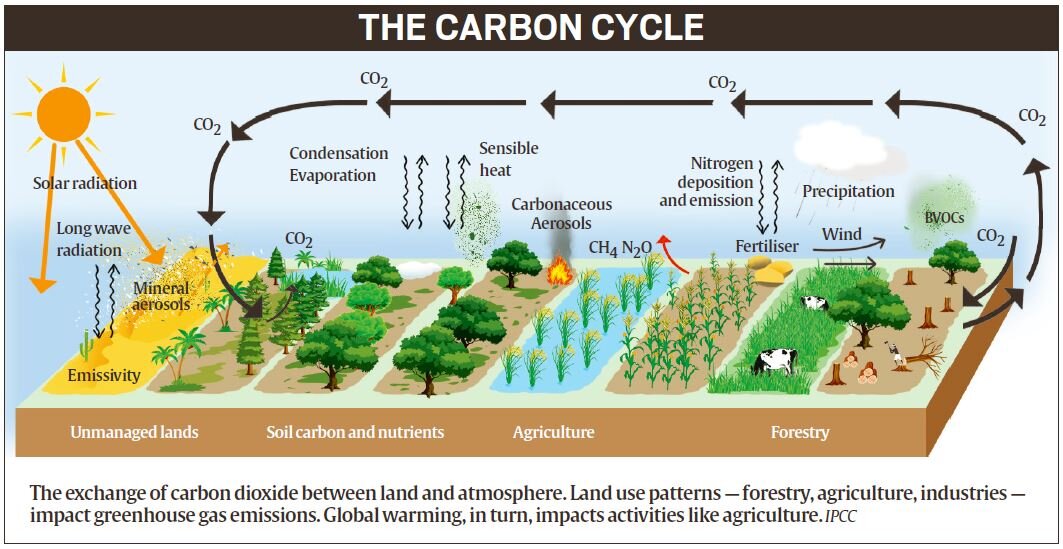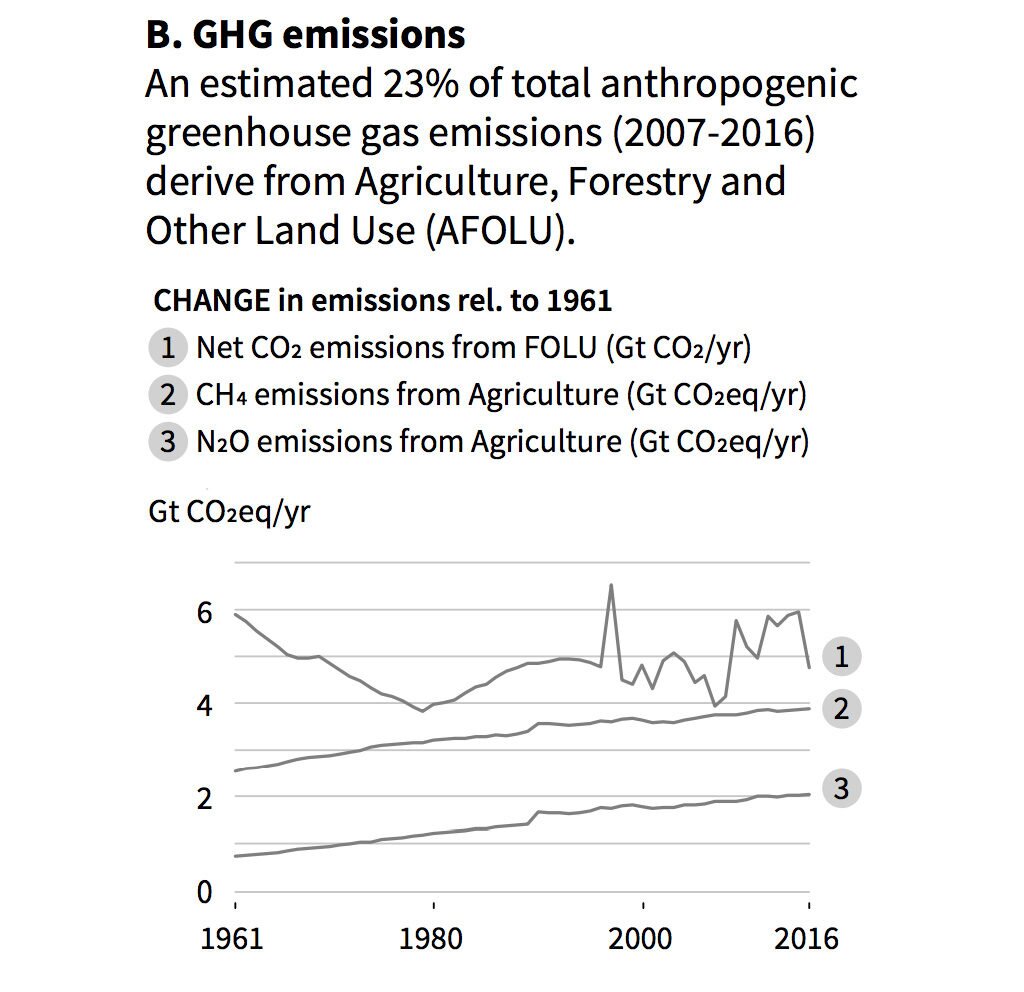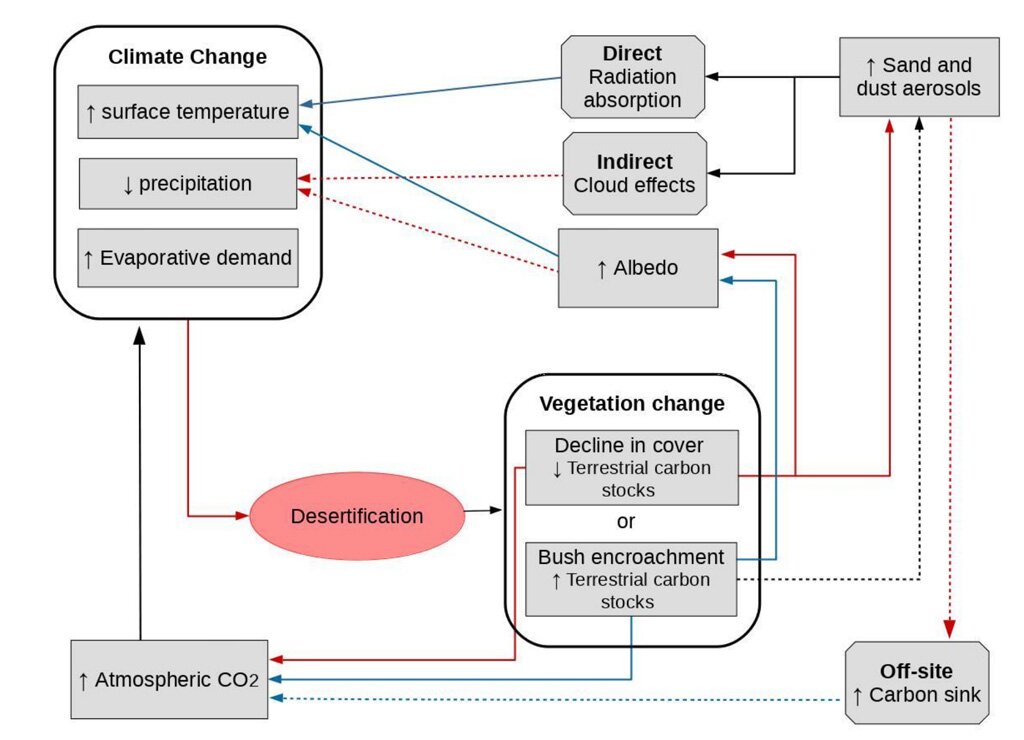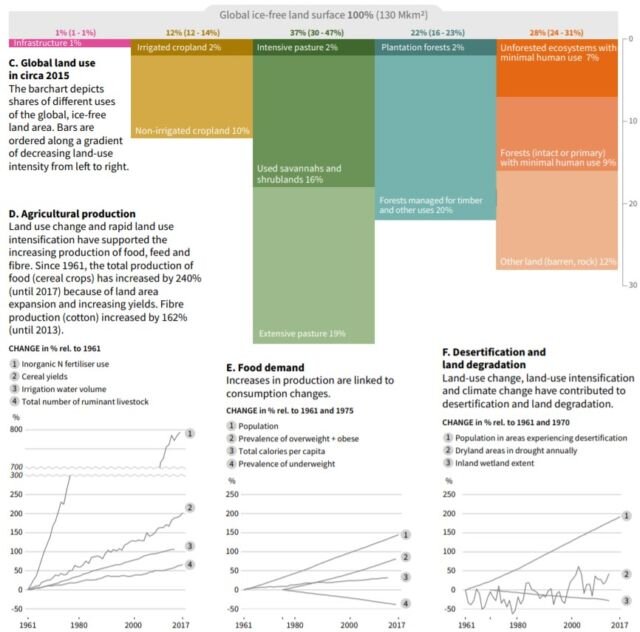Biodiversity & Environment
Climate Change and Land: IPCC’s Report
- 09 Aug 2019
- 5 min read
The Intergovernmental Panel on Climate Change’s (IPCC) report on ‘Climate Change and Land’ reveals the relation between climate change and land use pattern.
- This is the first time that the IPCC, has focused its attention solely on the land sector.
- The report focuses on the contribution of land-related activities to global warming i.e how the different uses of land, like agriculture, industry, forestry, cattle-rearing, and urbanisation, was affecting emission of greenhouse gases.
Key Findings
- Climate Change and Land degradation: Land degradation is linked to several climate variables, such as temperature, precipitation, wind, and seasonality.
- Reduced Photosynthesis: Extreme heat events can reduce photosynthesis in trees, restrict growth rates of leaves and reduce the growth of the whole tree.
- In regions where plants decline, land degradation is expected to occur as vegetation provides a vital safeguard against erosion.
- Increased Aridity: global warming will exacerbate heat stress thereby increasing deficits in soil moisture that in turn will increase the rate of drying/ aridity.
- Rainfall and Flooding: as a consequence of climate change can also delay planting, increase soil compaction, and cause crop losses.
- Reduced Photosynthesis: Extreme heat events can reduce photosynthesis in trees, restrict growth rates of leaves and reduce the growth of the whole tree.
Land Degradation
IPCC report defines land degradation as a negative trend in land condition, caused by direct or indirect human-induced processes including anthropogenic climate change, expressed as long-term reduction or loss of at least one of the following: biological productivity, ecological integrity, or value to humans.
- However, report states that some aspects of climate change can improve the condition of the land like CO2 fertilisation, where higher levels of CO2 in the atmosphere increase plant growth.
- How Does the Land contribute to Climate Change: Land acts as both the source as well as a sink of carbon thereby, large scale land-use changes like deforestation or urbanisation, or even a change in cropping pattern, have a direct impact on the overall emissions of greenhouse gases.
- Carbon Source: Land-based activities such as agriculture and forestry are sources of greenhouse gas emissions hence act as carbon source.
- Carbon Sink: Soil, trees and vegetation absorb carbon dioxide, thus act as carbon sinks.
- Climate Change and Desertification: The IPCC land report defines desertification as land degradation in arid, semi-arid, and dry sub-humid areas, collectively known as drylands, resulting from many factors, including human activities and climatic variations.
- According to report risks from desertification are projected to increase due to climate change.
- The decline in vegetation can leave the soil more at risk of erosion, increasing the likelihood of sand and dust storms that in turn would tend to decrease precipitation in the local climate, thus further reinforcing desertification.
- Impacts of Climate Change-driven Land Degradation:
- Poverty: Report states that climate change is frequently noted as a risk multiplier for both land degradation and poverty.
- Migration: Climate-related land degradation and migration are directly linked to each other.
- When people are pushed into poverty or have their livelihoods stripped as a result of changes in their environment, one adaptation option is to move to another area and this can be internally or across borders.
- Climate Change and Food Security: Climate change is affecting food security through increasing temperatures, changing precipitation patterns, and greater frequency of some extreme events.
- Agricultural Production: Increasing temperatures are affecting agricultural productivity in higher latitudes, raising yields of some crops (maize, cotton, wheat, sugar beets), while yields of others (maize, wheat, barley) are declining in lower-latitude regions.
- Nutritional Quality: Increased atmospheric CO2 levels can lower the nutritional quality of crops.
- Livestock Production: Future climate change could affect livestock production.
- An increase in desertification and heatwaves could have a direct impact on animal morbidity, mortality and distress that in turn could adversely affect the food security.
- Higher Prices: Report states that cereal prices could increase by 1-29% by 2050 as a result of climate change, leading to higher food prices and increased risk of food insecurity and hunger








